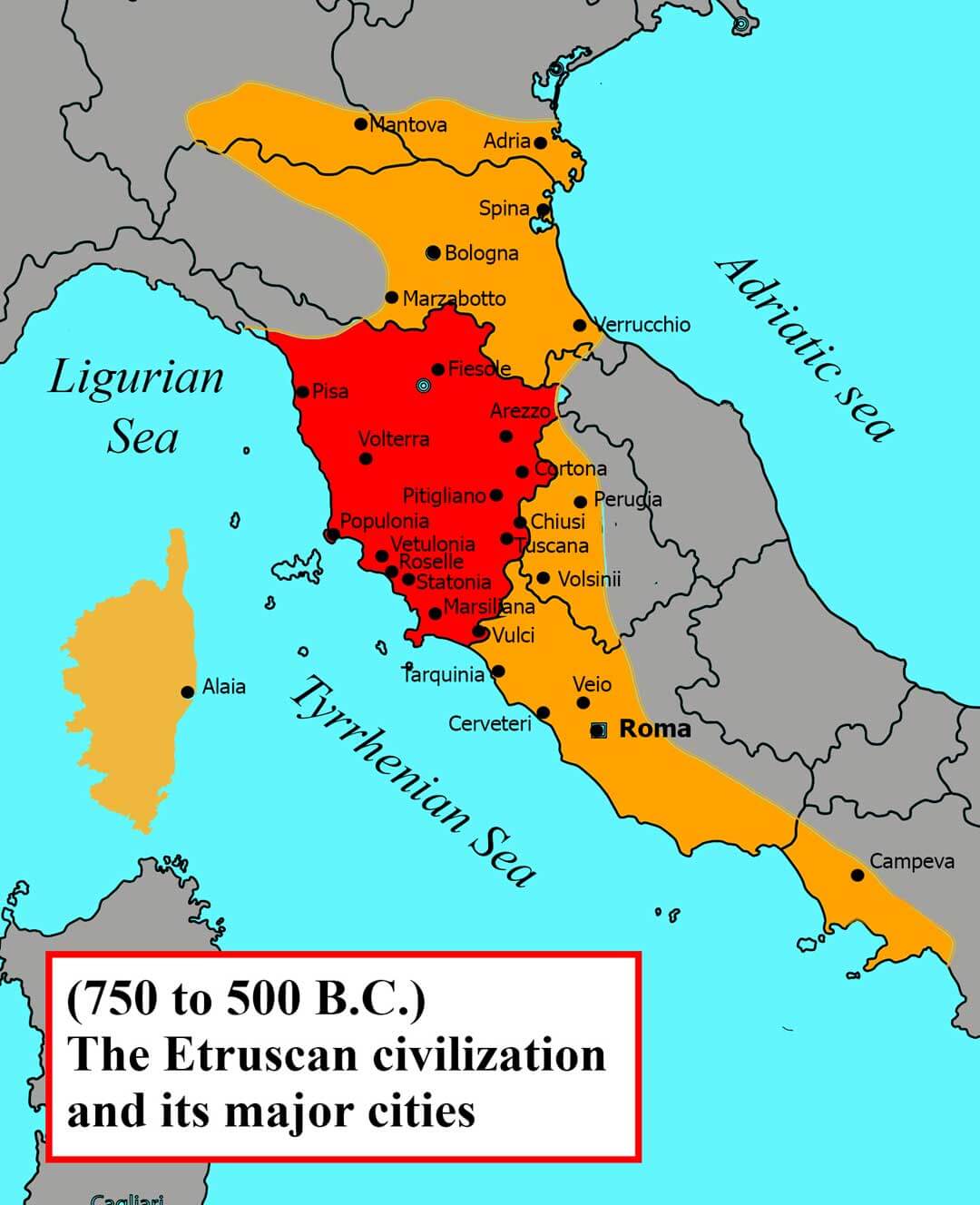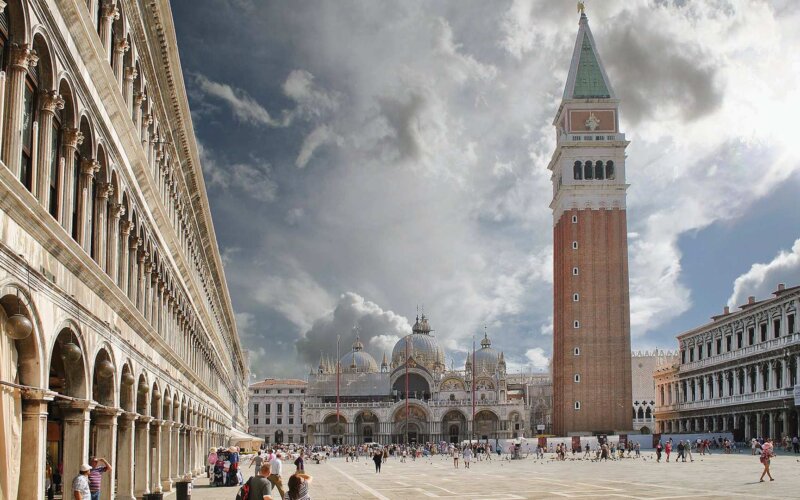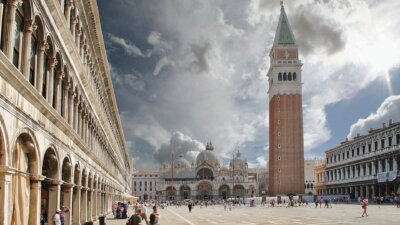In truth we know very little about Etruscan architecture and art. Certainly, we know very well the particular attention that this civilization has dedicated to the cult of the dead. As far as architecture is concerned, there are not many records, nowadays.
What most characterized the Etruscan architecture was the introduction of the vaulted arch, whose construction technique was inherited from Mesopotamian culture and later perfected by the building skills of the Romans. If we exclude the remains of the fortifications of some cities (walls and gates), there are very few architectural evidence that has survived the time, testifying to the fact that most of the Etruscan buildings were built with perishable materials.
The Etruscans were undoubtedly inspired by Greek culture to realize their works, characterizing them with decorative elements of handcrafted style.
Marcus Vitruvius Pollione (Marcus Vitruvius Pollio) was a Roman architect and writer and was the first architectural theorist of all time.
His treatise, (“De Architettura” 29 – 23 B.C.) became the cornerstone of this discipline, and it is thanks to it that today we can imagine how an Etruscan temple was built.
Fond of Italian Architecture?
Book a Tour Now!
Immerse yourself in the most significant places in our history.
CHOOSE NOW YOUR FIRST ITALIAN ARCHITECTURE TOUR
ROME - The Colosseum, Beasts & Gladiatorial GamesROME - Imperial Forum Full Immersion
ROME - Rise and Fall
VENICE - Journey into St. Mark’s Basilica, the Venetian Gem
VENICE - Once-in-a-lifetime Tour
MILAN - Duomo Cathedral and City Center Tour
FLORENCE - The Heart of Renaissance Florence: Duomo and Baptistery
FLORENCE - Highlights of the Uffizi Gallery
POMPEII - The City Frozen in Time
POMPEII - Discover Pompeii Hidden History with a Local
HERCULANEUM - Ancient Rome
SICILY - The Heart of Palermo
SICILY - Syracuse Tour
The Etruscan temple
For what concerns the conception of space, Etruscan temples were very similar to Greek ones. However, since the Romans devastated most of the Etruscan cities, nowadays we found only the bases and the votive statues in the necropolis of those temples.
They accessed the temple from a front staircase, and the structure was composed of two parts, a large atrium flanked by large columns, and several areas (cells) generally dedicated to the main trinity (Tinia, Uni, Minerva).
According to tradition, the temple faced South. Its basements were made of stone, the walls of clay bricks, while the columns and the beams of wood.
The roof was very protruding to protect the building from the weather.
The Sanctuary of Portonaccio is one of the most important and representative testimonies of the religiousness of the Etruscan people. You can find it in Isola Farnese, where there are the remains of the Temple of Apollo.
From the 7th century B.C. the cities were surrounded by massive walls, from which one could access to the three main streets. Examples are the cities of Volterra and Perugia.
A significant testimony of Etruscan architecture is the necropolises made of several sets of tombs.
The examples of Cerveteri and Tarquinia are unique evidence of the Etruscan civilization. The frescoes inside the tombs faithfully reproduce the buildings and houses of that time and accurately recreate the daily life of this civilization.
The tombs of the two necropolises have different characteristics. The ones in the archaeological site of Cerveteri are thousands and arranged according to an urban plan similar to the one of a city.
The Monterozzi necropolis of Tarquinia is famous for its frescoed tombs, carved into the rock.
Here you can find a list of the most important Etruscan sites in central Italy.
 In the southern area: Cerveteri (Caisra), Tarquinia (Tarchna), Vulci (Velch), Tuscania, Veio, Volsinii (Velzna), Sovana, Pitigliano, Statonia (now Poggio Buco), Marsiliana d’Albegna (at the time called Caletra);
In the southern area: Cerveteri (Caisra), Tarquinia (Tarchna), Vulci (Velch), Tuscania, Veio, Volsinii (Velzna), Sovana, Pitigliano, Statonia (now Poggio Buco), Marsiliana d’Albegna (at the time called Caletra);
In the central one: Chiusi (Clevsin), Cortona (Curtun), Arezzo (Aritim), Perugia (Perusna), Roselle (Russel), Vetulonia (Vetluna), Populonia (Pupluna);
In the northern one: Pisa, Fiesole (Vipsl), Gonfienti, Volterra (Velathri), governed first by kings, then by oligarchies.
Read more on Italian Architecture.




